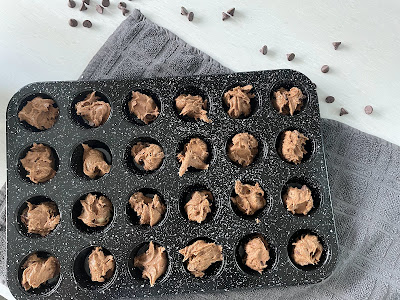Skip to main content
What is Gluten? What Does it Mean to be Gluten-free?
Unleashing the World of Gluten-Free Baking
Understanding Gluten, Allergies, Sensitivity, and Celiac Disease
Hello, dear readers! Today, I want to take you on a delicious journey into the world of gluten-free baking. As someone who personally follows a gluten-free diet due to sensitivity and a family history of celiac disease, I understand the challenges and rewards of exploring alternative baking options. In this blog post, we'll delve into the intricacies of gluten, discuss gluten allergies, sensitivity, and celiac disease, and discover the exciting possibilities that gluten-free baking offers.Understanding Gluten:
Gluten is a protein composite found in grains such as wheat, barley, and rye. It gives dough its elasticity, providing structure and texture to baked goods. While gluten is harmless for most people, it can cause adverse reactions in those with gluten allergies, sensitivity, or celiac disease.Gluten Allergies:
Some individuals have an allergic reaction when they consume gluten. These allergies typically manifest as an immune response, triggering symptoms such as hives, difficulty breathing, and digestive distress. Gluten allergies are relatively rare, affecting only a small percentage of the population.Gluten Sensitivity:
Gluten sensitivity, also known as non-celiac gluten sensitivity, refers to a condition where individuals experience adverse symptoms when consuming gluten, despite testing negative for celiac disease and gluten allergies. Symptoms of gluten sensitivity can vary widely and may include bloating, diarrhea, fatigue, headaches, and joint pain. While the exact mechanisms behind gluten sensitivity are still not fully understood, many people find relief by adopting a gluten-free diet.Celiac Disease:
Celiac disease is an autoimmune disorder triggered by the consumption of gluten in genetically predisposed individuals. When people with celiac disease consume gluten, their immune system launches an attack on the small intestine, damaging its lining and leading to a range of symptoms and potential complications. These may include abdominal pain, chronic diarrhea, malabsorption, weight loss, anemia, and even long-term health issues like osteoporosis or certain types of cancer. The only known treatment for celiac disease is a strict gluten-free diet.Living Gluten-Free:
If you have gluten sensitivity or celiac disease, or if gluten-free living is simply a personal choice, embracing gluten-free baking opens up a world of culinary possibilities. While initially, it may seem challenging to adapt to gluten-free ingredients and techniques, the rewards are well worth it. Today, there is a wide variety of gluten-free flours, including almond, coconut, rice, quinoa, and buckwheat, that can be used in baking. Additionally, xanthan gum or guar gum can help mimic the elasticity that gluten provides, aiding in achieving desirable textures in gluten-free baked goods.
Conclusion:
In conclusion, gluten-free baking offers an exciting and vibrant world of flavors and textures for those with gluten allergies, sensitivity, or celiac disease. By understanding the nature of gluten and the conditions associated with it, we can adapt traditional recipes and create mouthwatering gluten-free treats. Whether you're a gluten-free enthusiast or are just beginning your journey, remember that experimenting with different ingredients and techniques is part of the fun. So, get ready to unleash your creativity in the kitchen and savor the joys of gluten-free baking!Disclaimer: This blog post is for informational purposes only and is not intended to replace professional medical advice. If you suspect you have a gluten-related condition, please consult with a healthcare professional for an accurate diagnosis and appropriate guidance.




Comments
Post a Comment